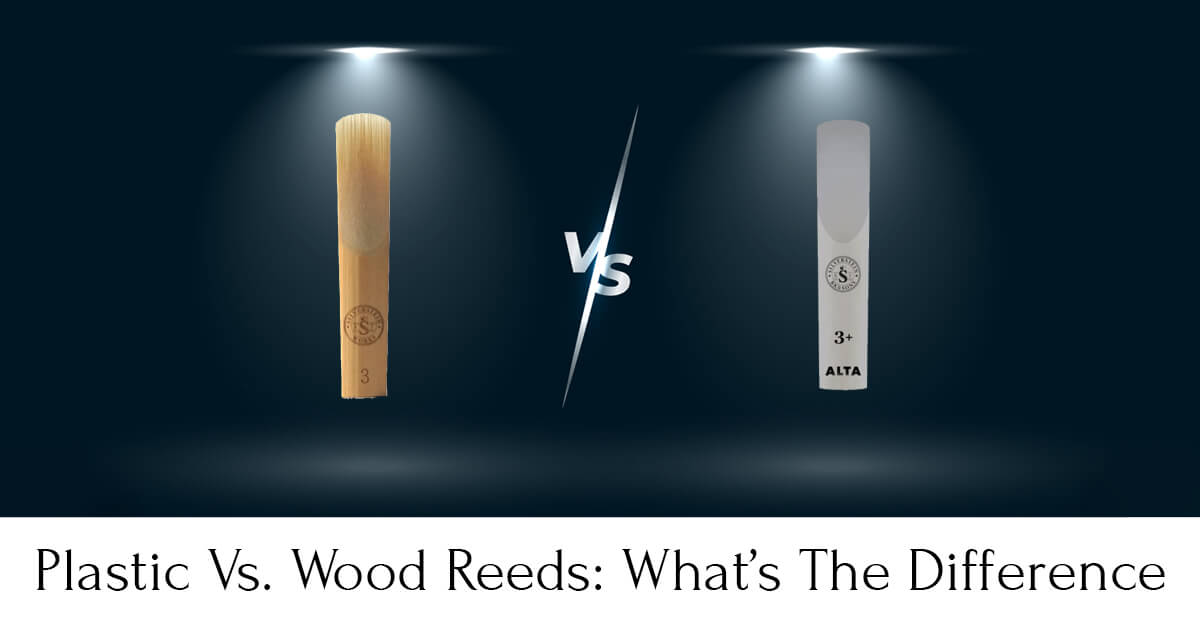When it comes to reeds, the smallest details can make the biggest of differences. This includes being soft or hard, filed or unfiled, and of course, being made of plastic or wood.
Table of Contents
Plastic Reeds vs. Wood Reeds: The Short Answer
Firstly, let’s tackle the fact that they can also be referred to as synthetic and cane for plastic vs. wood reeds, respectively. And since the former isn’t natural, it’s more adaptive, but the latter is a lot easier to control and handle.
The Full Comparison
Of course, it’s not just about adaptability and control, which brings us to the details of the comparison, starting with one of the most distinctive differences.
Maintenance
When it comes to the maintenance you’ll have to provide, plastic reeds are definitely a lot easier to handle.
To begin with, cane or wood reeds have to be warmed a little before being played, which means that you’ll always have to make sure you have the time to prepare them.
What’s more, the tone of wood reeds can change with the changes in the weather or changes in humidity, which makes plastic a lot more reliable. Not to mention, you don’t have to replace plastic reeds as often as you would have to replace wooden ones.
Winner: Plastic Reeds.
Also Read: Vandoren V21 In-Depth Review
Sound and Adaptability
With a plastic reed, what you see is what you get. You can’t sand any of the notes to be slightly lower or higher.
On the other hand, a wood reed can give you a lot of room to hit the notes exactly the way you want them. This is because they’re much softer, which is also why they make the best alto sax reeds that work in a combination that fits beginners and novices perfectly.
However, this is not to say that plastic reeds are more professional. In fact, some pro saxophonists tend to prefer wood reeds for what control they allow the player.
Winner: Wood Reeds.
Playbility
This part is quite situational, but how you intend to utilize your reed can make a difference when it comes to choosing a plastic reed vs. a wood reed.
If you’re planning on playing multiple instruments at a time or if you’re planning to play outside, you should definitely opt for a plastic reed.
This is because they don’t dry during the period of time you’ll be playing the other instrument, and they won’t be affected by the weather -cold or hot- when you’re playing outside. So, if you play your sax in a marching band, the answer is pretty straightforward.
Winner: Plastic Reeds.
Here’s a video
Price
There’s no doubt that plastic reeds are a lot more expensive than wood ones, which makes sense as they last a lot longer and require less frequent replacement.
Recommended: Royal vs Rico reeds head-to-head comparison
In other words, if you have a bulk amount that you can put into your reed, you could opt for the plastic ones for their durability.
Winner: Tie.
Check out this video that tests a number of Legere plastic reeds against cane reeds:
Conclusion
In the end, you can’t decide whether a plastic reed is better for you than a wood reed unless you know what you want out of your reed.
If you’re looking for easier playability, more control over the tones, and adaptivity, you might want to opt for cane reeds. But you should also be adaptable to how its tone could change with the weather and humidity.
On the other hand, if you want something more consistent and don’t mind spending a little extra effort to control it well, then a synthetic plastic reed will suit you just fine.

